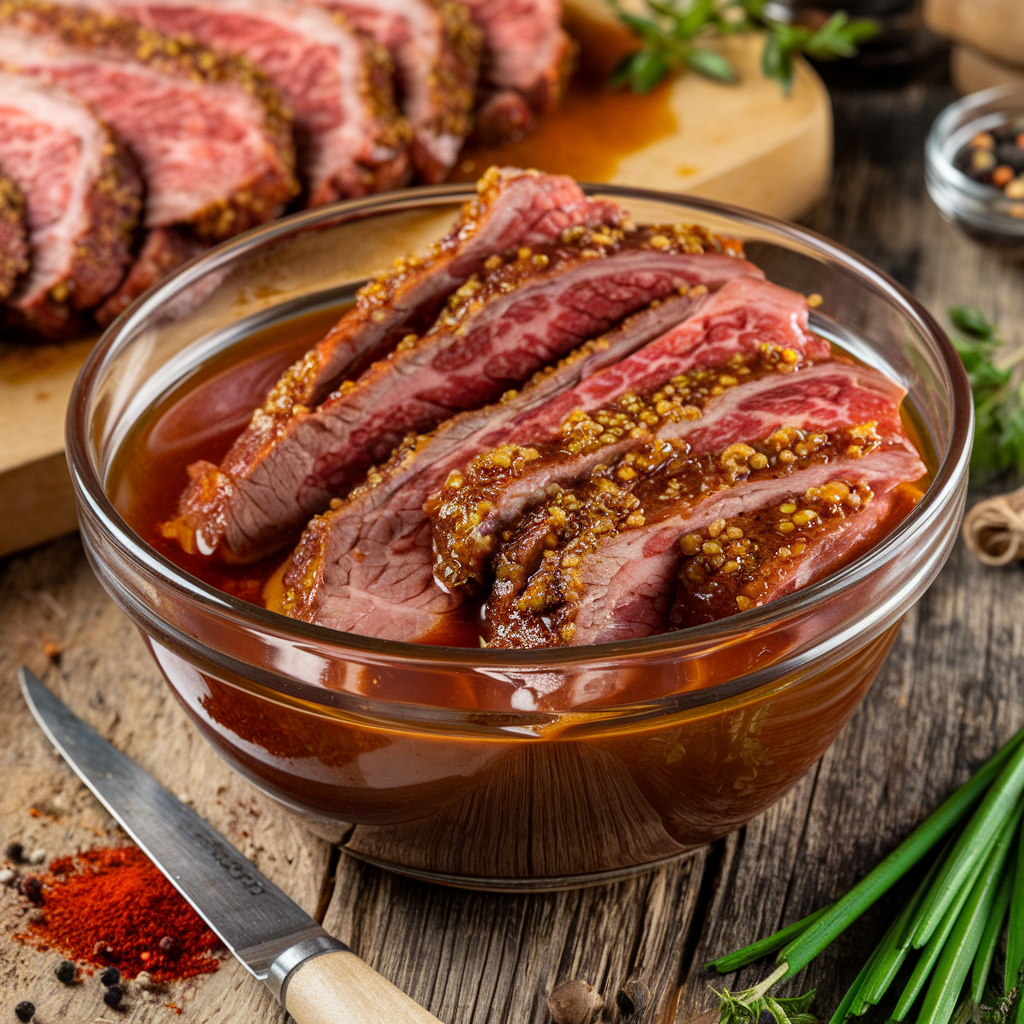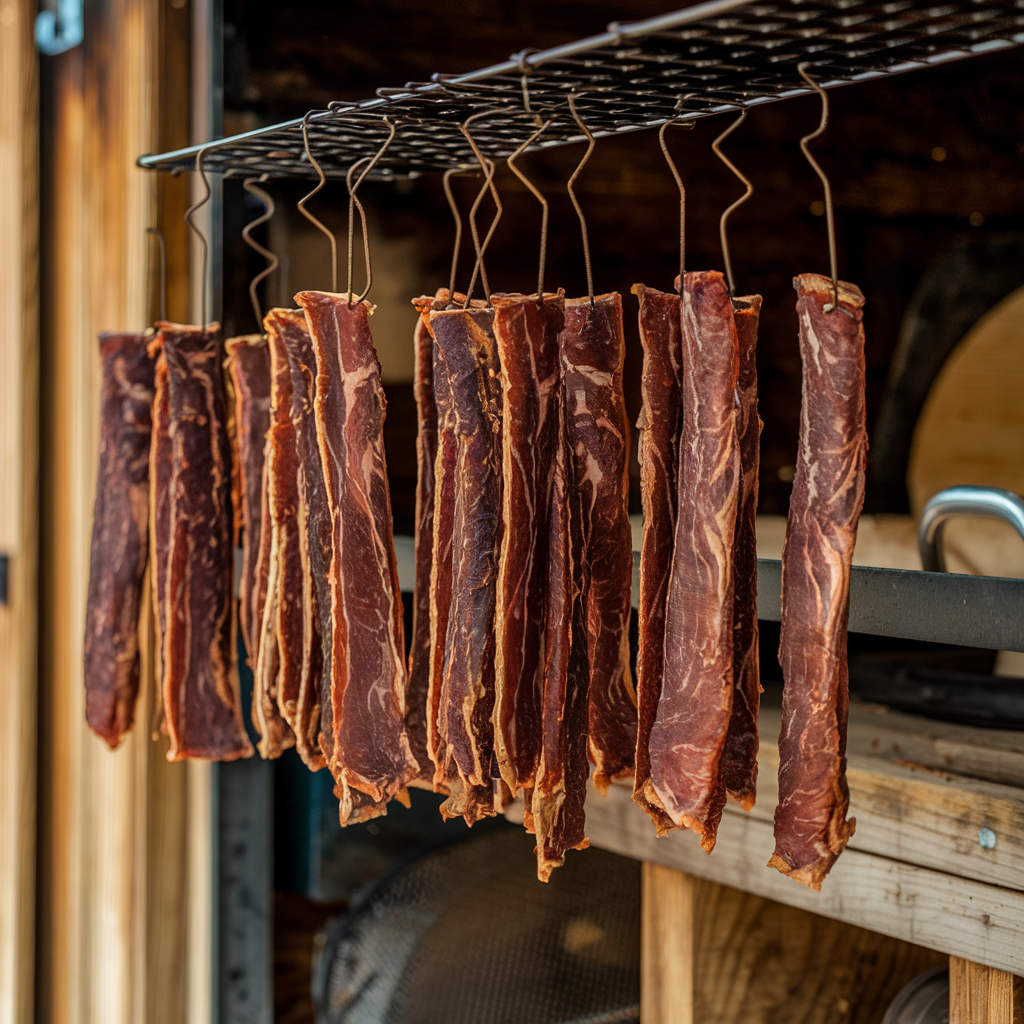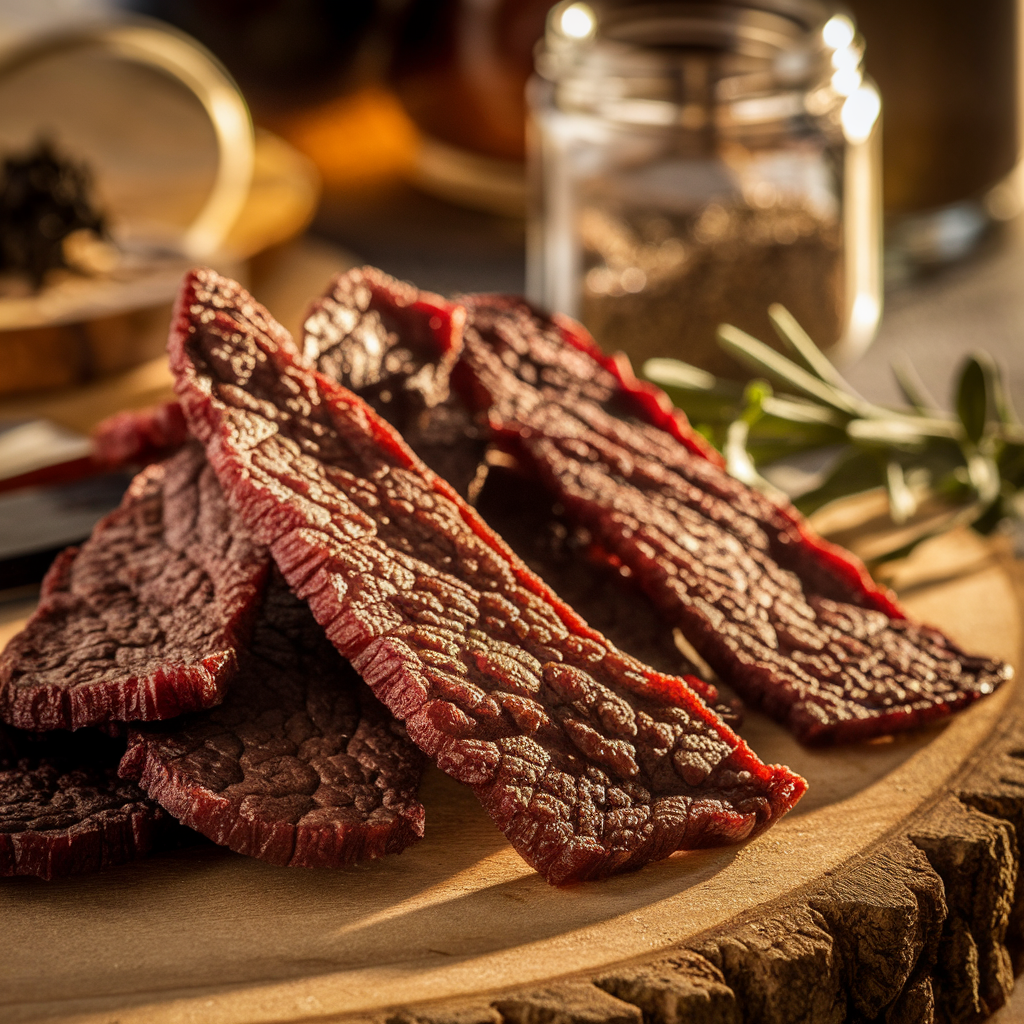Table of contents
Introduction
Smoking jerky is a beloved tradition among barbecue enthusiasts and snack lovers alike. Smoked beef jerky is made by selecting the right cut of meat, which is essential for making the best-tasting, tender, and flavorful jerky. In this guide, we’ll explore the best cuts of meat for smoking jerky and provide you with tips to perfect your homemade jerky.
Understanding Beef Cuts
Overview of Beef Cuts

When it comes to making jerky, not all beef cuts are created equal. The best jerky is made from lean cuts of beef that are low in fat. Fat does not dry out during the smoking process and can cause the jerky to spoil more quickly. Lean cuts, on the other hand, dry evenly and produce a more consistent texture.
Recommended Cuts for Jerky
- Top Round: This cut is lean and easy to slice into uniform strips, making it a popular choice for jerky. It has a good balance of flavor and texture.
- Bottom Round: Another lean cut that is slightly less tender than top round but still excellent for jerky. It’s economical and widely available.
- Eye of Round: This cut is very lean and has a fine grain, which makes it ideal for jerky. It can be a bit more expensive but is worth the investment for high-quality jerky.
- Sirloin Tip: This cut is lean and flavorful, making it a great option for jerky. It’s a bit more tender than the round cuts and can result in a slightly more tender jerky.
Characteristics of the Best Cuts
Top Round
Top round is a lean cut of beef that comes from the rear leg of the cow. It is known for its robust flavor and slightly chewy texture, making it an excellent choice for jerky. The lack of fat in top round ensures that the jerky will dry evenly and have a longer shelf life. It’s also relatively affordable and widely available.
Bottom Round
Bottom round, another cut from the rear leg, is a bit less tender than top round but still makes fantastic jerky. It has a rich beefy flavor and, like top round, is low in fat. This cut is often more economical, making it a great option if you’re looking to make large batches of jerky without breaking the bank.
Eye of Round
Eye of round is prized for its fine grain and very lean composition. It is slightly more expensive but is worth the investment for high-quality jerky. The eye of round cut comes from the hindquarters and is cylindrical in shape, making it easy to slice into uniform strips. The resulting jerky is tender and flavorful.
Sirloin Tip
Sirloin tip, also known as the round tip, is a lean and flavorful cut from the front part of the rear leg. It is slightly more tender than the other round cuts, providing a good balance between texture and flavor. Sirloin tip is a versatile cut that works well for jerky, giving you a slightly more tender result than top or bottom round.
Preparation of Beef for Jerky
Slicing the Meat
The first step in preparing beef for jerky is slicing it into thin, uniform strips. This ensures that the jerky dries evenly and has a consistent texture. For best results, aim for strips that are about 1/4 inch thick. Partially freezing the meat for about an hour before slicing can make this task easier and help achieve uniform slices. Always slice against the grain to produce a more tender jerky.
Marinating the Meat

Marinating the beef strips is crucial for adding flavor and tenderness. Prepare a marinade using a combination of ingredients such as soy sauce, Worcestershire sauce, brown sugar, and liquid smoke. Allow the beef strips to marinate in the refrigerator for at least 4 hours, or overnight for best results. Turn the beef occasionally to ensure the marinade is evenly absorbed.
Smoking Process
Equipment Needed
To smoke beef jerky, you’ll need the right equipment. The most common types of smokers include electric smokers, charcoal smokers, pellet smokers, and gas smokers. Each type has its benefits, and you can choose based on your preference and availability. If you don’t have a smoker, you can also use a regular grill or an oven.
Types of Smokers

- Electric Smokers: Easy to use and provide consistent temperature control, making them ideal for beginners.
- Charcoal Smokers: Offer a traditional smoky flavor and are favored by purists but require more attention to maintain the correct temperature.
- Pellet Smokers: Use wood pellets and are known for their convenience and ability to maintain a steady temperature.
- Gas Smokers: Heat up quickly and are easy to use but might not provide as much smoky flavor as charcoal or pellet smokers.
Alternative Methods
- Grill: Set up indirect heat and use wood chips to create smoke. This method can produce good results if you don’t have a smoker.
- Oven: Set the oven to its lowest temperature and use a foil-lined baking sheet with a rack to allow air circulation. Keep the oven door slightly open to let moisture escape.
Smoking Time and Temperature
To achieve the best results, maintain a consistent smoking temperature between 160-180°F. Smoking beef jerky typically takes around 4-6 hours. The exact time can vary based on factors like the thickness of the beef strips and the type of smoker used. It’s crucial to keep the temperature steady to ensure the jerky dries evenly and develops a rich, smoky flavor.
Monitoring and Adjusting
During the smoking process, periodically check the beef strips to ensure they are drying evenly. You’ll know the jerky is done when it bends and cracks but doesn’t break in half. If the jerky feels too soft or moist, it needs more time in the smoker. Adjust the smoking time based on your preference for texture and chewiness.
Tips for Perfect Jerky
Maintaining Consistent Temperature
Maintaining a consistent temperature is critical to achieving the perfect smoked beef jerky. Fluctuating temperatures can cause the jerky to cook unevenly, resulting in some pieces being over-dried while others are under-dried. Use a reliable meat thermometer to monitor the internal temperature of your smoker and make adjustments as needed to keep it within the 160-180°F range.
Avoiding Common Mistakes
To ensure your jerky turns out perfect, avoid these common mistakes:
- Over-Smoking or Under-Smoking: Too much smoke can make the jerky bitter, while too little can result in a lack of flavor. Balance is key.
- Inconsistent Slicing: Unevenly sliced beef strips can lead to inconsistent drying times. Aim for uniform thickness to ensure all pieces dry evenly.
- Skipping the Marinating Step: Marinating not only adds flavor but also helps tenderize the meat. Skipping this step can result in tough, flavorless jerky.
Storage and Shelf Life
Proper storage is essential to maintain the quality and safety of your beef jerky. Once the jerky has cooled completely, store it in an airtight container or vacuum-sealed bags. Properly stored jerky can last up to two weeks at room temperature. For longer storage, keep the jerky in the refrigerator or freeze it to extend its shelf life.
Health Benefits and Nutritional Information
Nutritional Profile of Beef Jerky
Smoked beef jerky is not just a tasty snack; it’s also packed with nutritional benefits. It’s a high-protein snack that can be a great addition to your diet, especially if you’re looking for a convenient and portable source of protein.
Protein Content
Beef jerky is an excellent source of protein, which is essential for building and repairing muscles, as well as supporting various bodily functions. A typical serving of beef jerky provides about 10-15 grams of protein, making it a powerful snack for post-workout recovery or a mid-day energy boost.
Vitamins and Minerals
In addition to protein, smoked beef jerky contains essential vitamins and minerals such as iron, zinc, and B vitamins. Iron is crucial for oxygen transport in the blood, zinc supports immune function and wound healing, and B vitamins play a vital role in energy metabolism and maintaining healthy nerve function.
Health Benefits
While beef jerky offers numerous health benefits, it’s important to consume it in moderation due to its sodium content. High sodium intake can lead to increased blood pressure and other health issues. Opt for homemade recipes or choose store-bought options with lower sodium levels to enjoy beef jerky as a healthy snack.
Properly prepared and smoked beef jerky is free from artificial preservatives and additives, making it a healthier alternative to many processed snacks. It provides a quick source of energy and nutrients, making it an ideal choice for busy lifestyles, outdoor activities, and as a convenient protein snack on the go.
Conclusion
Recap of Key Points
Choosing the right cut of meat is essential for making the best smoked beef jerky. Lean cuts like top round, bottom round, eye of round, and sirloin tip are ideal due to their low fat content and great flavor. Proper preparation, including slicing the meat uniformly and marinating it, is crucial for achieving the desired texture and taste. Smoking at a consistent temperature and monitoring the process ensures perfect jerky every time.
Call to Action
We encourage you to try making your own smoked beef jerky at home using the tips and techniques outlined in this guide. Share your jerky creations with us on social media and join the community of jerky enthusiasts!
FAQs
What is the Best Cut of Meat for Smoking Jerky?
The best cuts for smoking jerky are lean cuts like top round, bottom round, eye of round, and sirloin tip. These cuts have low fat content, which helps the jerky dry evenly and reduces the risk of spoilage.
How Thick Should Beef Be for Jerky?
For the best results, slice the beef into uniform strips about 1/4 inch thick. This ensures even drying and consistent texture throughout the jerky.
How Long Should You Smoke Beef Jerky?
Smoking beef jerky typically takes around 4-6 hours at a consistent temperature of 160-180°F. The exact time can vary based on the thickness of the beef strips and the type of smoker used.
What Temperature Should You Smoke Beef Jerky At?
The optimal temperature range for smoking beef jerky is between 160-180°F. Maintaining this temperature ensures the jerky dries evenly without cooking too quickly.

